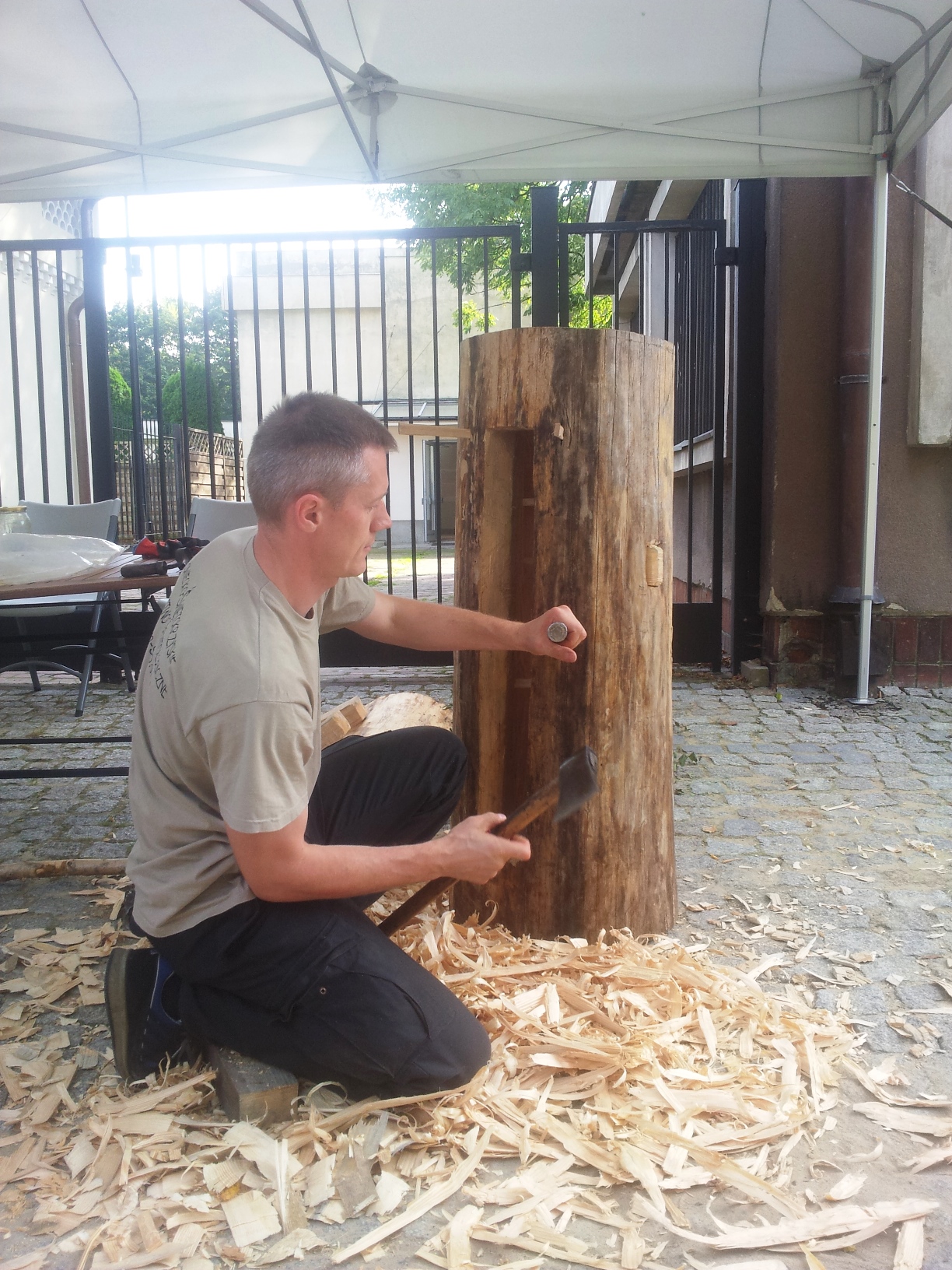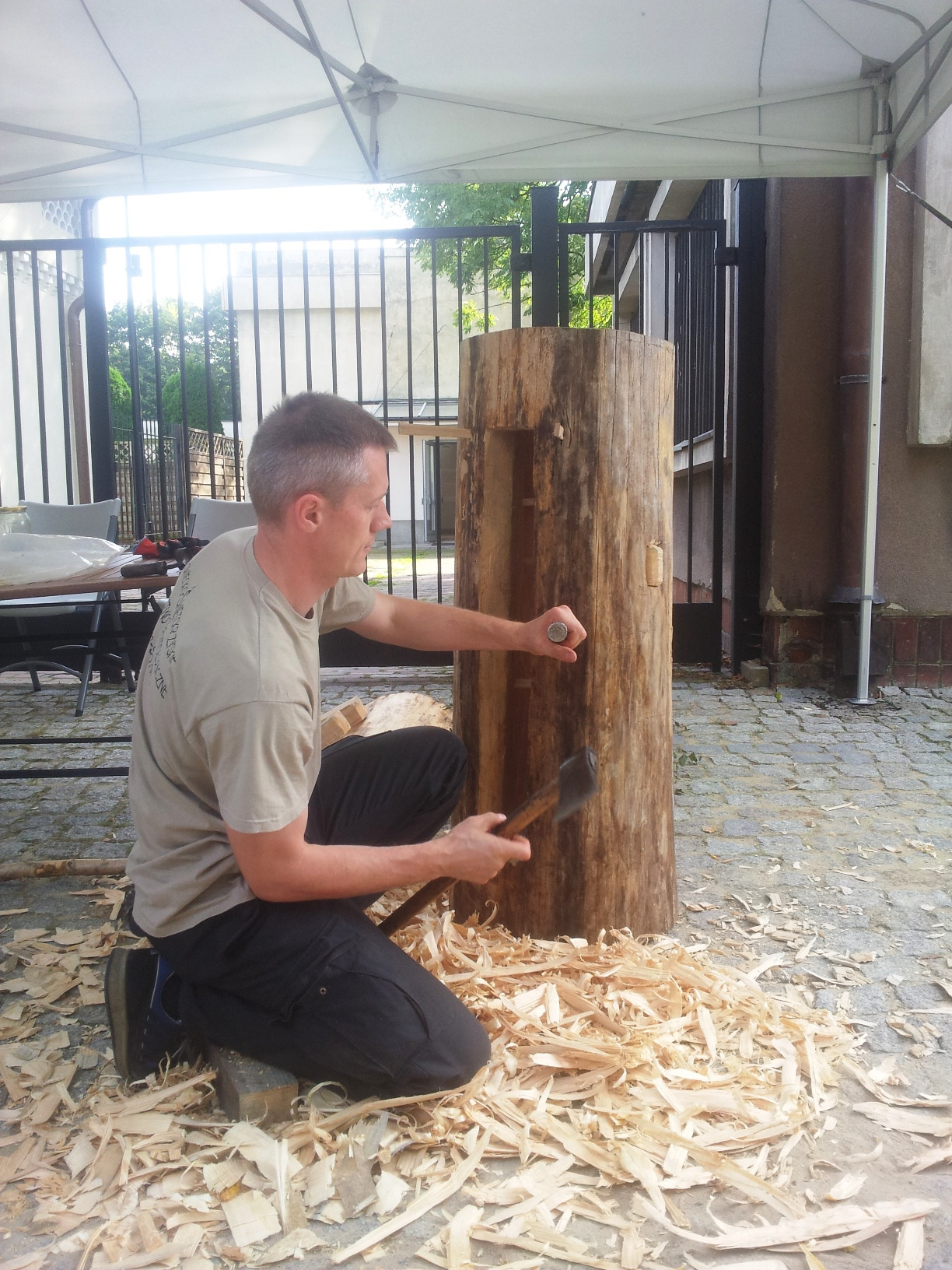How does wild beekeeping happen?
As part of the project “Social education in the conflict between urbanisation and ecology at the Wilanów Palace Museum”, we will recreate the forest beehive on the basis of historical data. These activities will be accompanied by demonstrations of traditional beekeeping, including beehive weaving. The beehive could not exist without a “benefit-fructifying” garden, which we will reconstruct in its historical form – with quarters, insects and a nursery. There will also be a rose garden with plants cultivated 200-300 years ago.
The first beehive weaving demonstration took place in September, during the Wilanów Days 2014. Numerous guests admired the drilling of a special hole in a tree trunk, prepared for bees to live in. They could also see how a beekeeper managed to climb a tree using a ‘leziwo’ (a device used for climbing beekeeping trees and sitting or standing while working on the beehive).
The history of beekeeping in Poland dates back to the earliest times. Initially, valuable honey was selected from natural tree holes where wild bees produced it. However, it was a difficult and time-consuming task. So they started widening these natural holes and then digging new ones. This is how beekeeping began.
The bees in the beehives are kept almost semi-wild. The beekeeper visited them only twice a year: in spring, to clean the bees, and in autumn, during the honey harvest. He left some of the honey for the bees to survive the winter. He also protected the beehives for the winter to protect the bees from honey lovers, the most famous of which were, of course, bears.
A characteristic tradition of beekeeping was marking a tree with a beehive with a beekeeping sign, which stated that a given beehive already had an owner.
The project “Social education in the conflict between urbanisation and ecology at the Wilanów Palace Museum” is implemented thanks to the support provided by Iceland, Liechtenstein and Norway under the Financial Mechanism of the European Economic Area.

